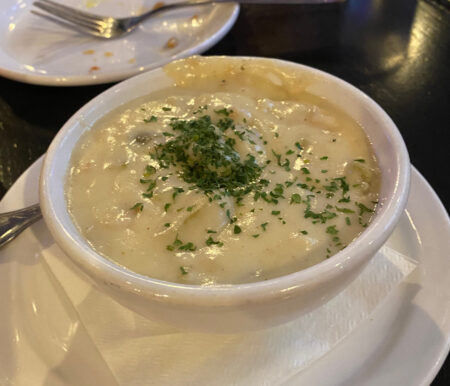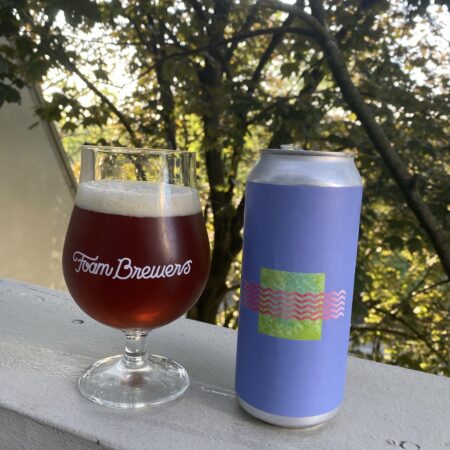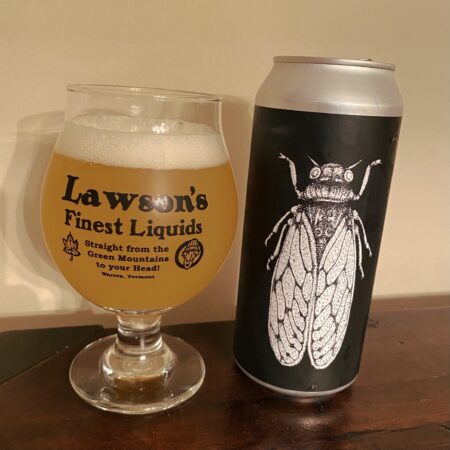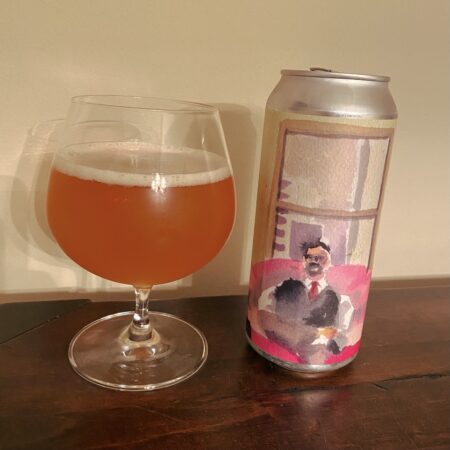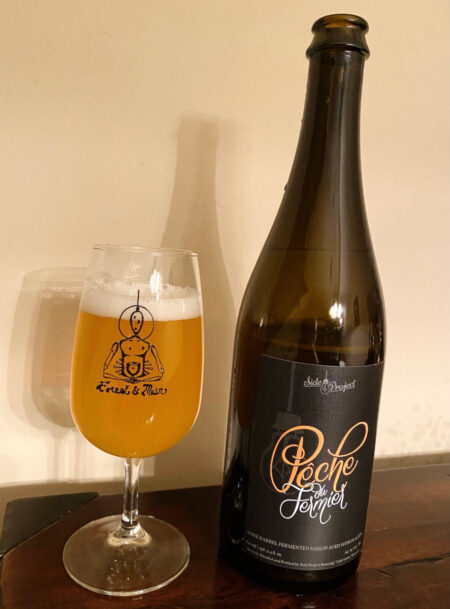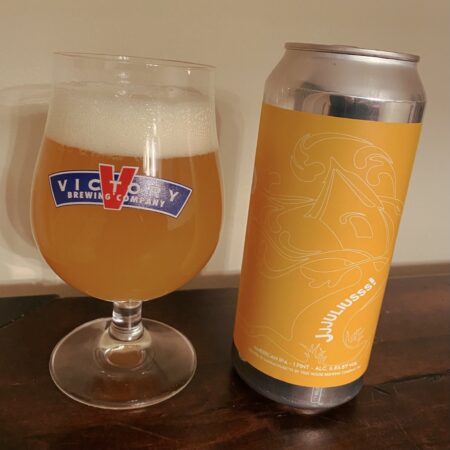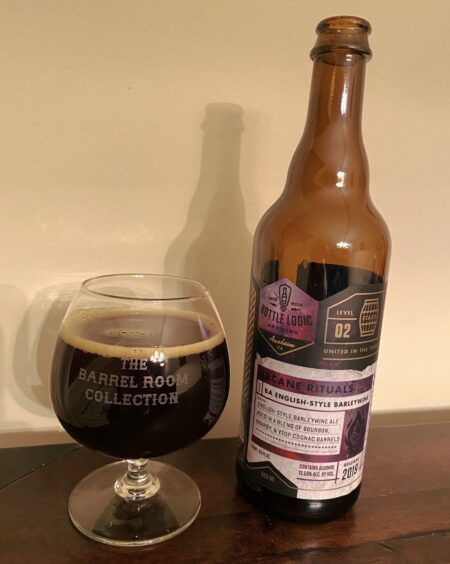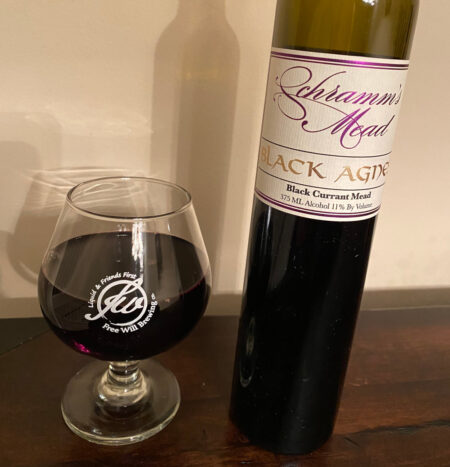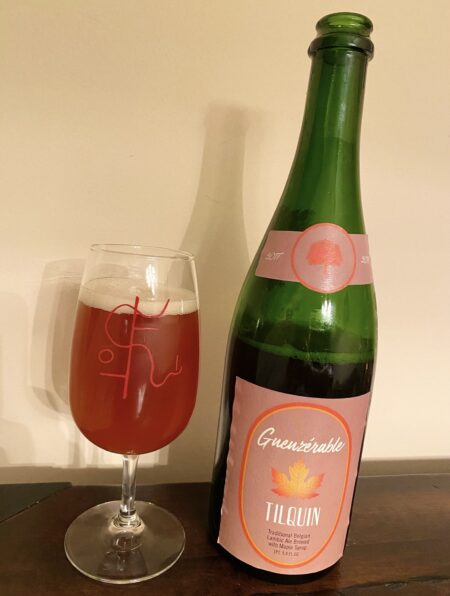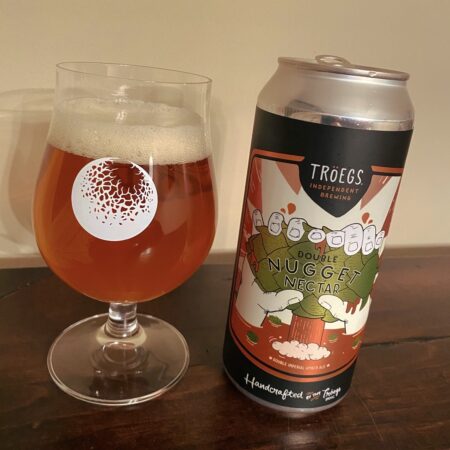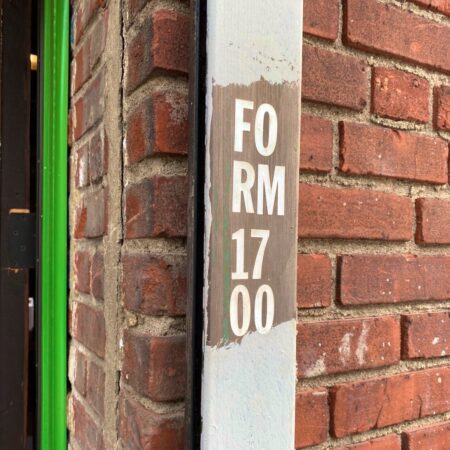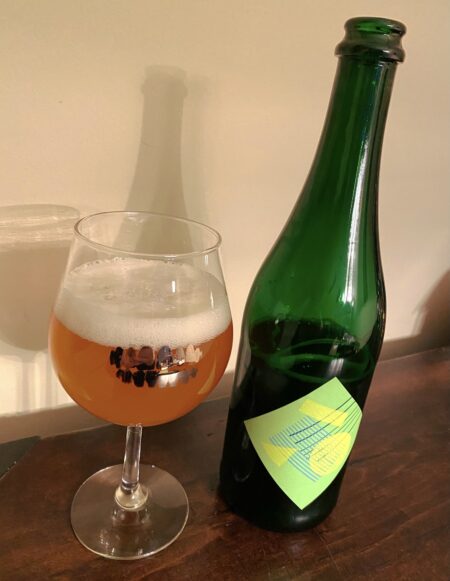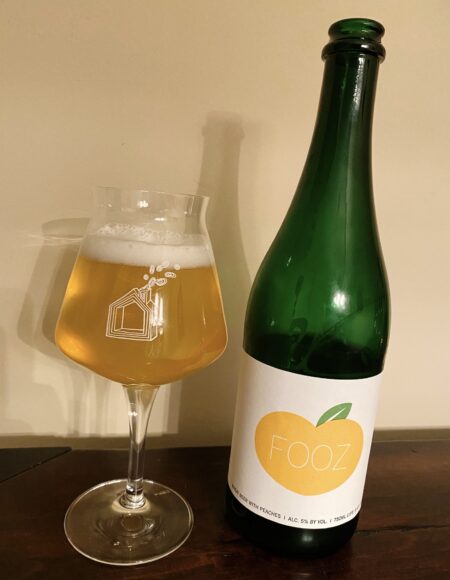It’s been quite a while since travel has been advisable at all, let alone travel specifically for the decidedly unhallowed purpose of beer, but I figured it would be fun to reprise the Operation Chowder trip to the Boston area that was quite enjoyable a few years ago. There was no beer-related event or centerpiece that precipitated the trip, just a desire to get away for a few days.
First stop, on the way, was a sortie on Tree House Brewing. We’ve long been a fan of the brewery here at Kaedrin, so it was nice to finally visit the brewery. That said, the NEIPA (or Hazy IPA or whatever you want to call it) has become common enough (if not ubiquitous) such that while Tree House is undoubtedly one of the better purveyors of such styles, you could probably also find a world class example closer to home (unless you live near Treehouse, duh). Definitely worth visiting if it’s on your way or something, but maybe not worth a trip unto itself.
It’s quite a large operation at this point, and they’ve got the whole ordering process down pat. Beautiful brewery and good beer, not much else to ask for… Some of these have detailed tasting notes and were drunk after the trip, others just have vague thoughts (as a lot of stuff in this post will have, since I wasn’t taking detailed notes while on the trip).

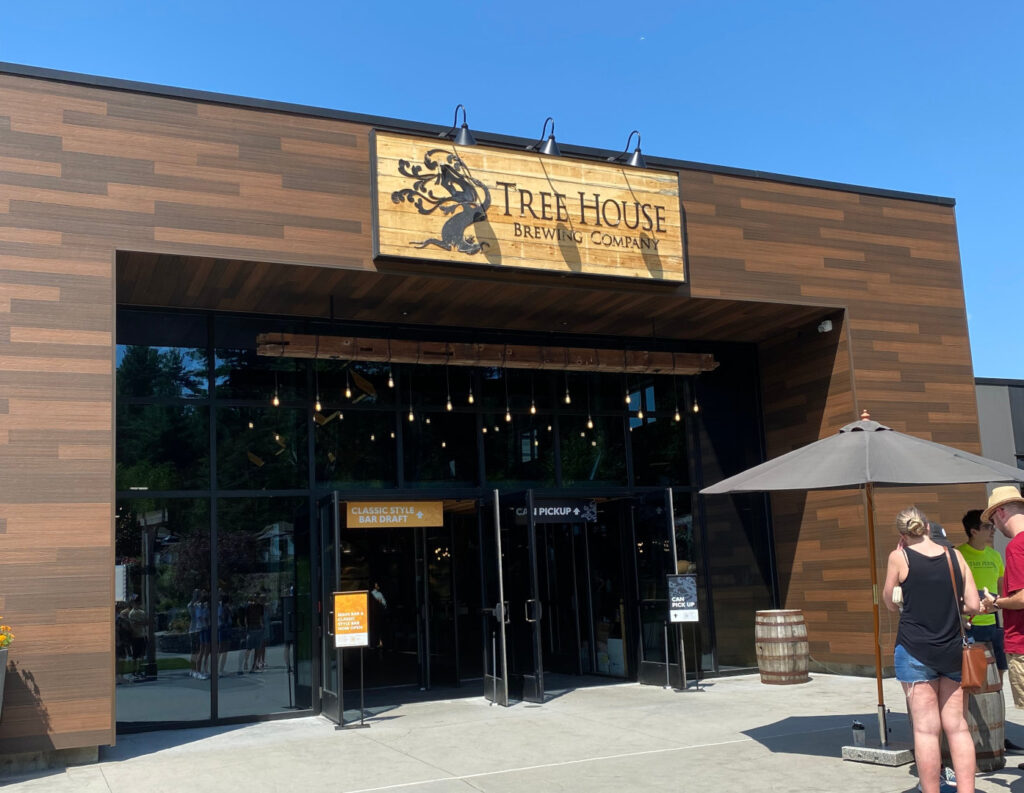
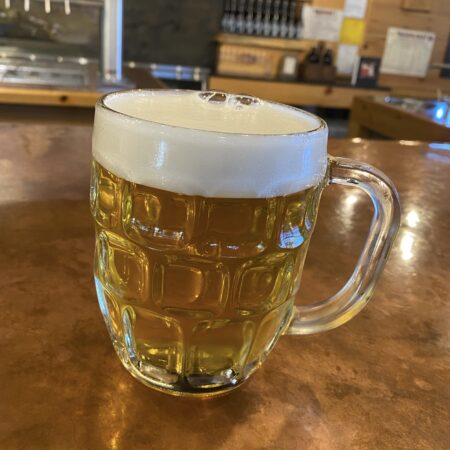
Tree House Trail Nelson – Solid little pilsner with an extra dose of Nelson Sauvin hops. While the non-traditional hops are there and make their presence known, it’s still primarily a pilsner (i.e. this doesn’t feel like an IPL or something, as some hopped up pilsners can). Easy going and quaffable stuff. It doesn’t quite hit top tiers of pilsner-dom, but it hit the spot. B
Beer Nerd Details: 5.1% ABV on draft. Drank out of a mug on 8/26/21.
Tree House Free to Roam – Helles lager that spent some time conditioning in a horizontal oak foeder, reminiscent of Hill Farmstead’s Poetica series. Pours a clear golden yellow color with a few fingers of fluffy white head, good retention, and lacing as I drink. Smells nice, bread, crackers, noble hops, floral and herbal, maybe a faint hint of vanilla and citrus. Taste hits those same notes from the nose, but perhaps not as complex here. Mouthfeel is light bodied and crisp, with slightly lower than normal carbonation (it’s certainly there, but not as much as you’d expect from this type of beer). Overall, quite enjoyable. B+
Beer Nerd Details: 5% ABV canned (12 ounces). Drank out of a tulip glass on 8/30/21. Canned: 7/24/21. AND WE WILL.
Tree House Very Green – Amped up version of Green, one of Tree House’s flagship beers. Pours a cloudy, murky pale yellowish color, almost brown depending on lighting (look what you need to know here is that it’s not green, ok?), with a couple fingers of fluffy white head. Smells very sweet, candied tropical fruits, citrus, something floral in the background. Taste follows the nose, sweet, tropical fruit, and a balancing bitterness in the finish. Mouthfeel is medium to full bodied, well carbonated, balanced, and and almost dry note in the finish. Overall, ayup, pretty great stuff. A-
Beer Nerd Details: 8.3% ABV canned (16 ounce pounder). Drank out of a tulip glass on 9/3/21. Canned on 08/25/21.
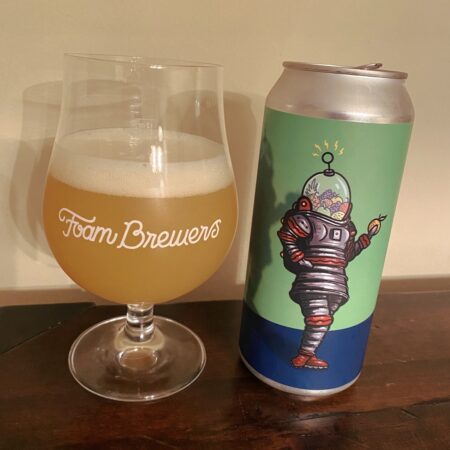
Tree House Queen Machine – Amarillo – Part of a series of beers based off of a Juice Machine base, and using that to explore concentrated lupulin pellets (in this case, Amarillo pellets). Similar in appearance and character to Very Green, but this is less tropical, more like orange or grapefruit, a little bit of floral, very nice. Would be curious to try other editions of Queen Machine at the same time to get the hop distinctions – many of these NEIPAs can get to feel a bit… samey, so it would be an interesting exercise. That said, if you’re going to make a bunch of beers that taste similar to this, you’re not exactly doing bad work… A-
Beer Nerd Details: 8% ABV canned (16 ounce pounder). Drank out of a tulip glass on 9/6/21. Canned on 08/11/21. THE QUEEN HAS ARRIVED.

Tree House Cobbler – This is basically Julius conditioned atop freeze-dried peaches. Another murky chicken broth looking thing, but man those peaches just explode in the aroma. The taste is perhaps less, er, explosive, but that actually works in its favor. The base Julius is there with just some added peachy notes. Same well balanced mouthfeel as Julius too. Great stuff here, probably the highlight of my purchases from Tree House. A
Beer Nerd Details: 6.8% ABV canned (16 ounce pounder). Drank out of a tulip glass on 9/10/21. Canned on 08/23/21.
Tree House Mega Treat – A hopped up rendition of Super Treat, which is itself, an amped up version of Treat. It definitely has that sweet, candied hop character that the name would imply, though I think these were the oldest cans I bought (and despite my normal OCD recording of canned on dates, I seem to have misplaced that info this time, yikes), and that NEIPA character does tend to fall off over time. I suspect this would have been better fresh, though it’s no slouch now. B+
Beer Nerd Details: 8.7% ABV canned (16 ounce pounder). Drank out of a tulip glass on 9/18/21.
So Tree House: worth stopping in and excellent as always. Once we arrived in Boston proper, we made our way to Fenway for a baseball game. In checking out the local environs, we did spy a brewery called Cheeky Monkey right across from the field. Let’s not dwell on it, but they did not impress, both in terms of beer and customer service (mistakes were made). My guess is that they can get away with this due to their location.
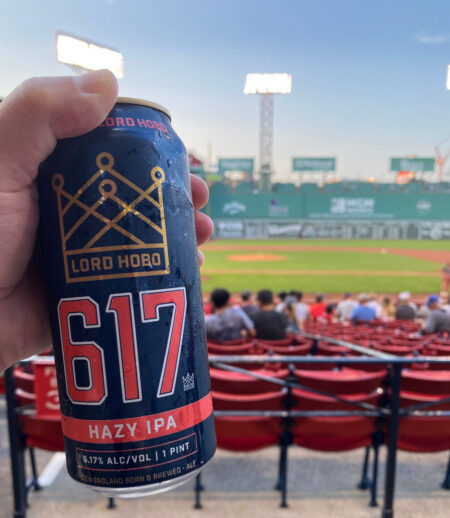
Fenway itself is always fun, and a member of my fantasy baseball team hit a home run in my presence, which is nice. There may have been higher end beer options somewhere, but the best I found was Lord Hobo’s 617, a tasty but standard NEIPA (named after the area code for Fenway, and it’s naturally 6.17% ABV).

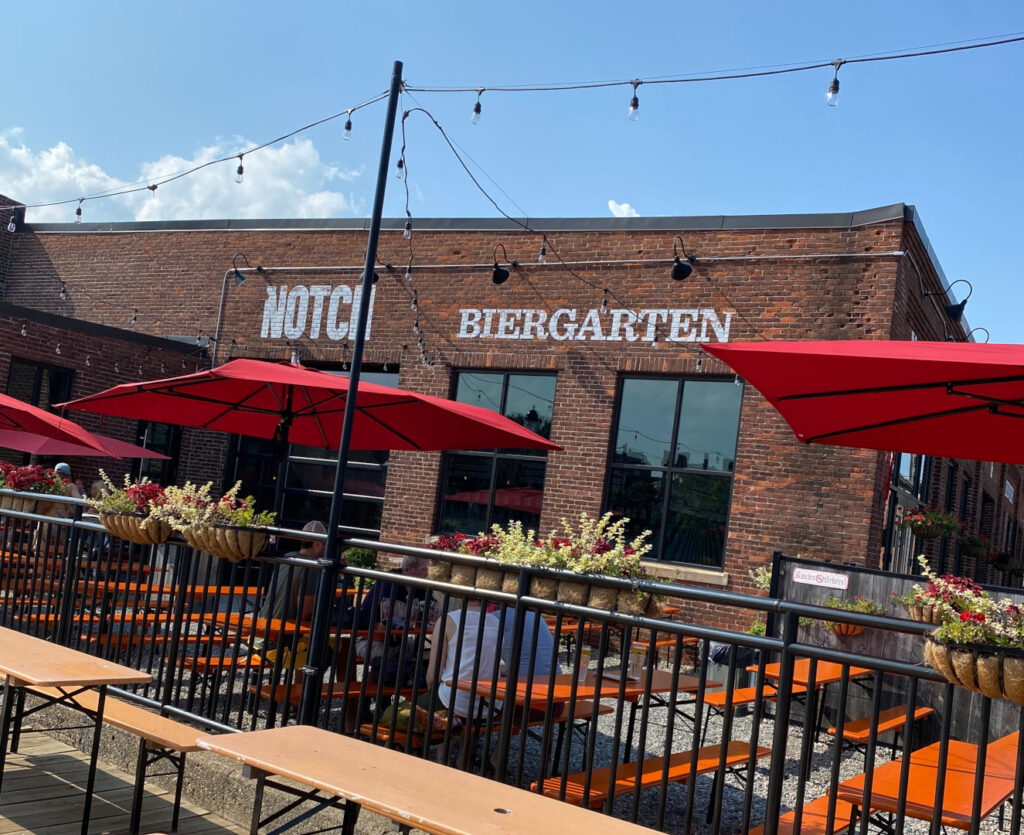
The next day we made our way up to Salem for some witchery, which had some appeal, but the highlight of the visit was Notch Brewing. A nice little place right on the waterfront, they had a wonderful selection of low octane lagers and deeply unsexy European ales (to be clear: in this world of hazebros and pastry stouts, “unsexy” is a high complement.)
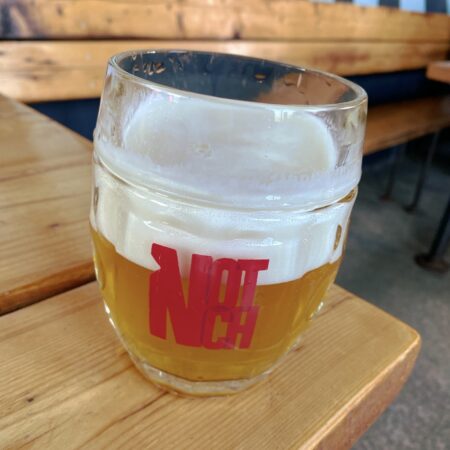
Notch The Standard – Double decocted Czech pilsner hopped with Sterling. As the name implies, this is a pretty standard pils, but it’s one of those beers that could set that standard. Crisp, quaffable, tasty stuff. B+
Beer Nerd Details: 4.4% ABV on draft. Drank out of a mug on 8/27/21.
Notch Ungespundet – Apparently the name of this beer translates to “unbunged” in German; a reference to a specific fermentation strategy that regulates the amount of natural carbonation. Or something like that. Clean, malt forward, bready with a light toast character, reminiscent of an Oktoberfest (though still distinct). A-
Beer Nerd Details: 4.5% ABV on draft. Drank out of a Willibecher glass on 8/27/21.
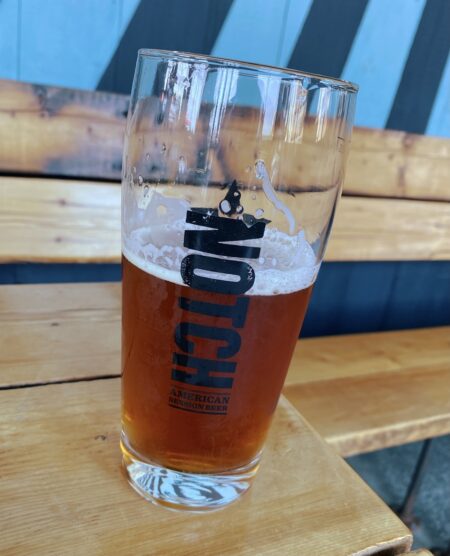
Notch Altbier – I have some coworkers who live in Düsseldorf, and they’re always telling me I need to visit and drink Altbier, which is a specialty of that city. I’ve had a few American takes on the style, and this might be the best I’ve had. Dark bread, toast, a hint of caramel and vanilla, but with a well rounded bitterness. Really tasty stuff.
Beer Nerd Details: 4.5% ABV on draft. Drank out of a Willibecher glass on 8/27/21.
And well, well, well, I just noticed that Notch delivers to PA. Will wonders never cease. You’ll be seeing more from Notch on this here blog. They were probably the highlight of this trip, so it’ll be nice to get my hands on more of their stuff.
There were naturally lots of other activities and bars visited upon the way, including some Freedom Trail shenanigans and a couple of standout bars, like The Plough and the Stars (minor taplist but good live music) and Bukowski Tavern (decent tap list, fun not-quite-dive-bar atmosphere!)
While this is the second Operation Chowder, I must admit that the most distinctive foodstuffs consumed during the trip were probably more lobster-related. However, the name “Operation Lobster” has been reserved for the inevitable trip to Maine that will materialize someday. In the meantime, I will leave you with the note that I did manage to procure some of this operation’s namesake during the trip. Prost!
